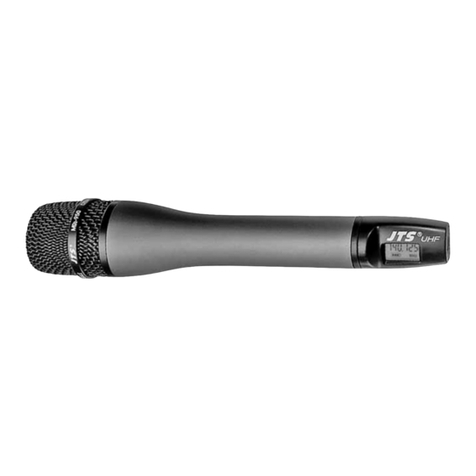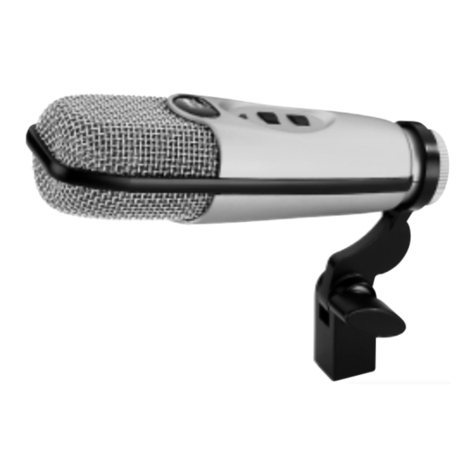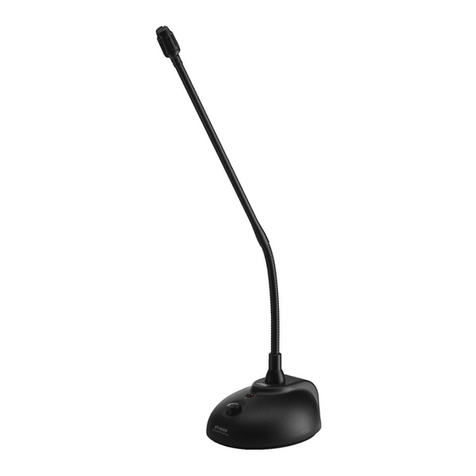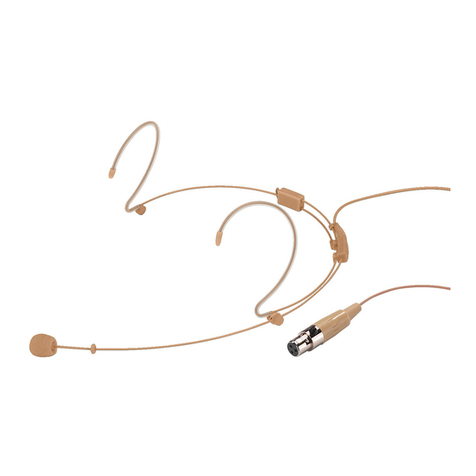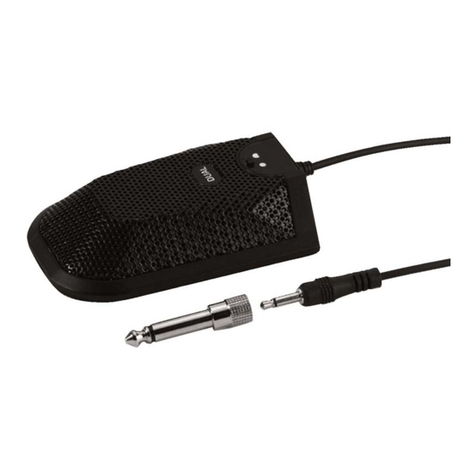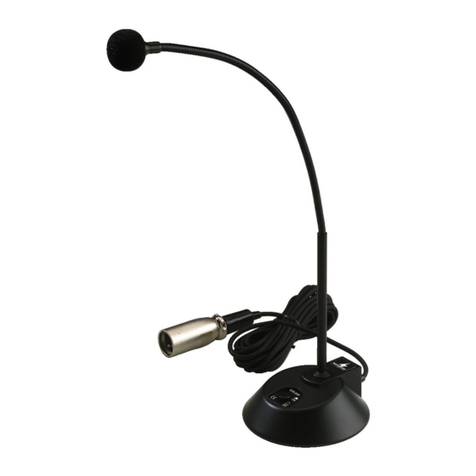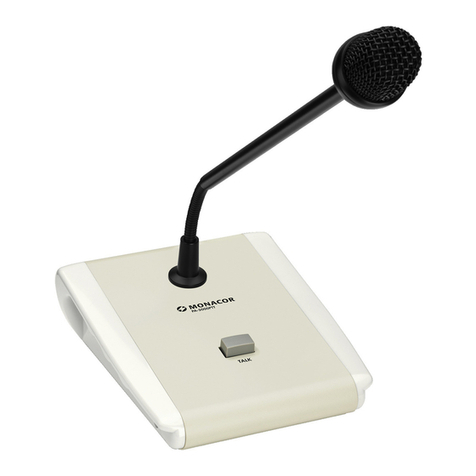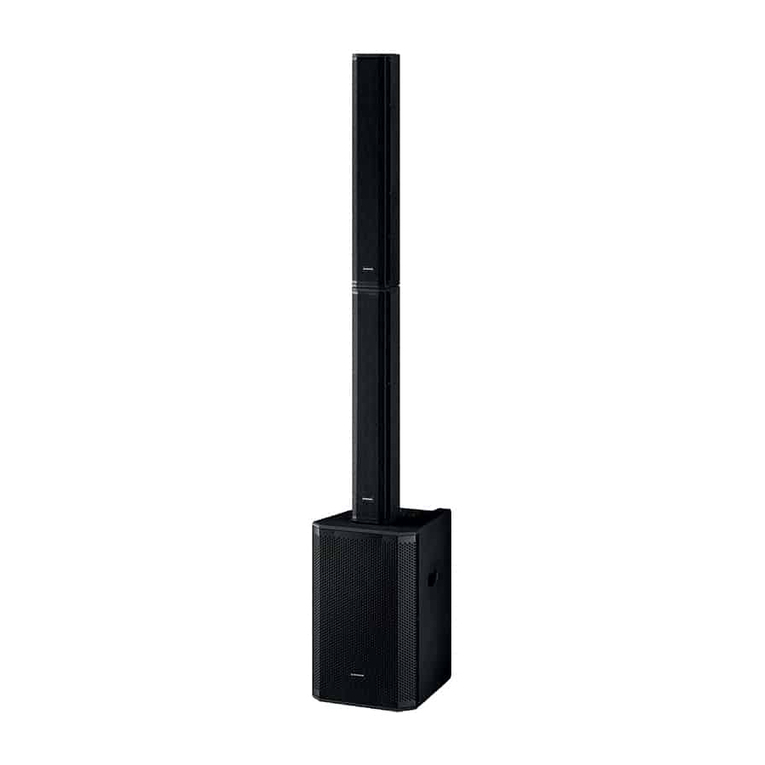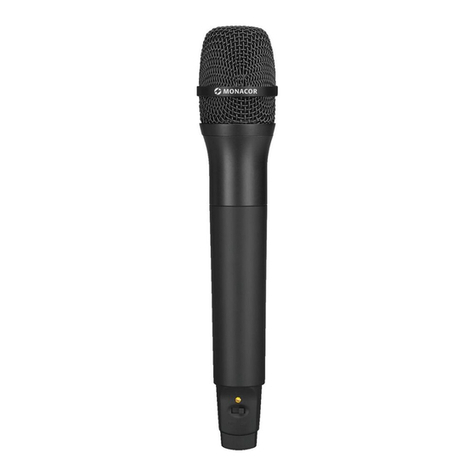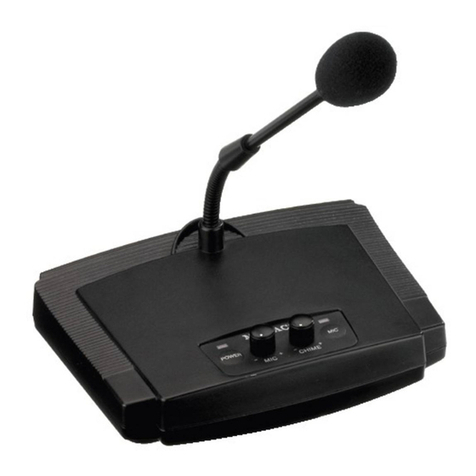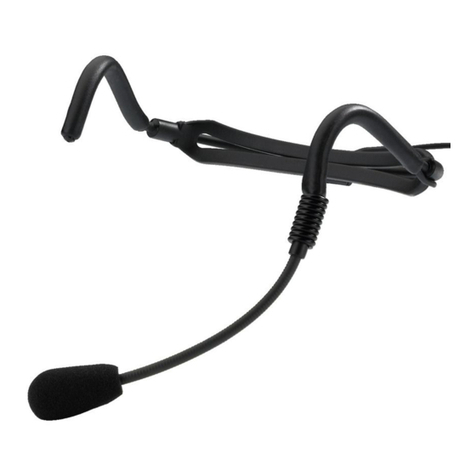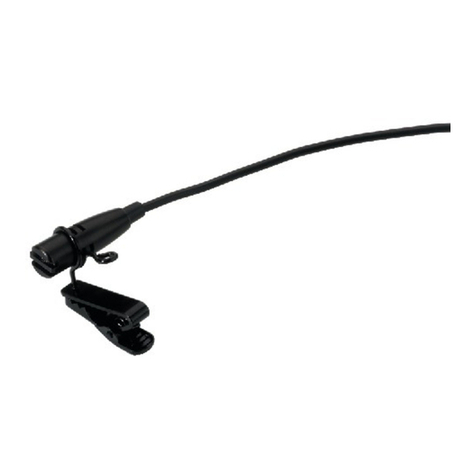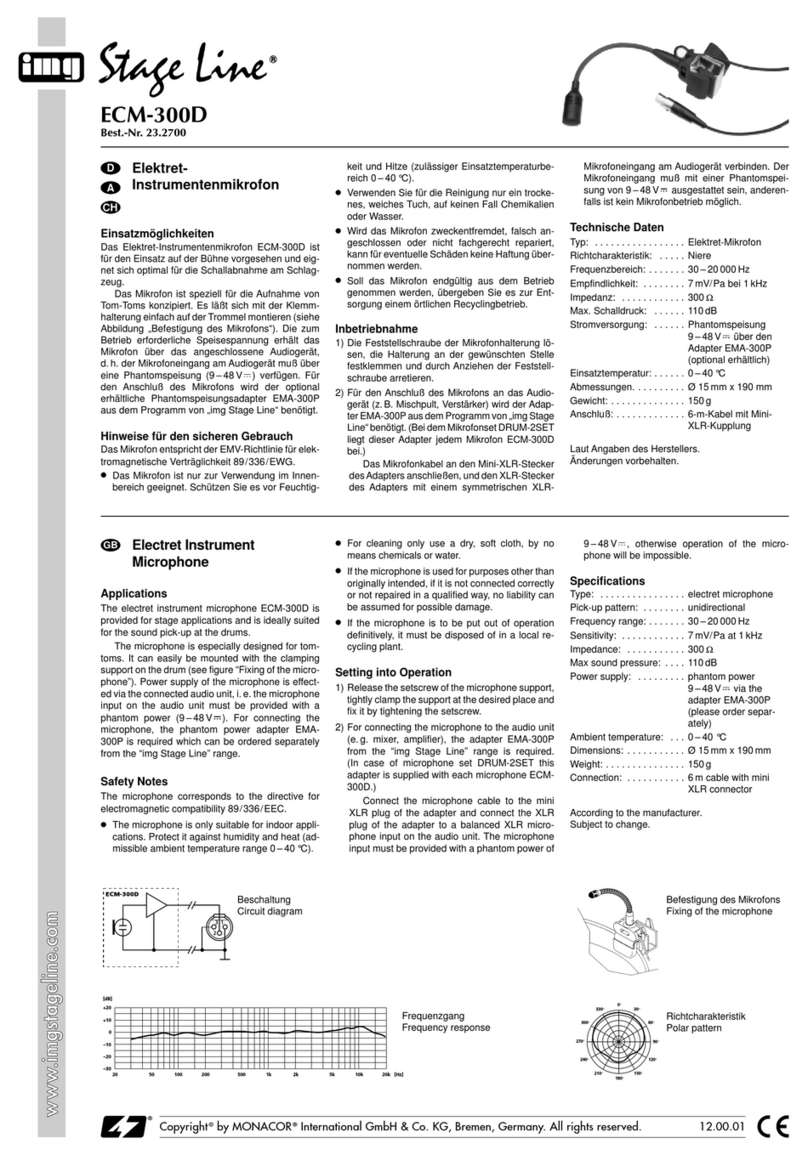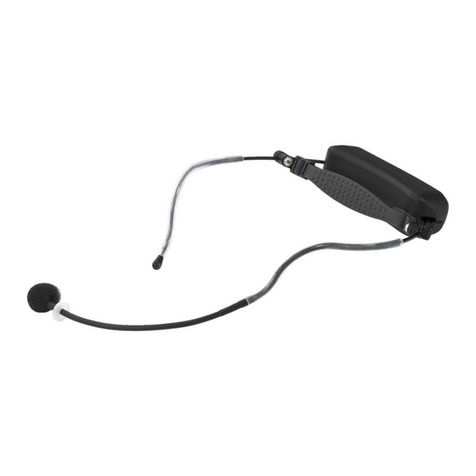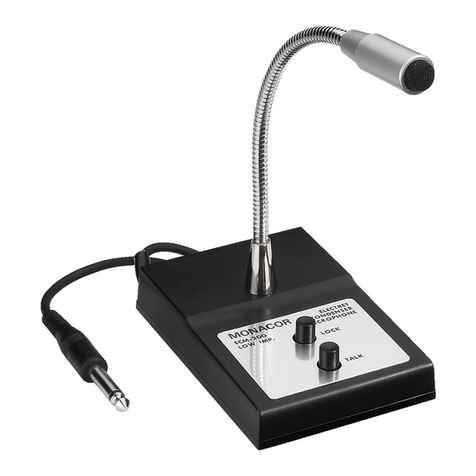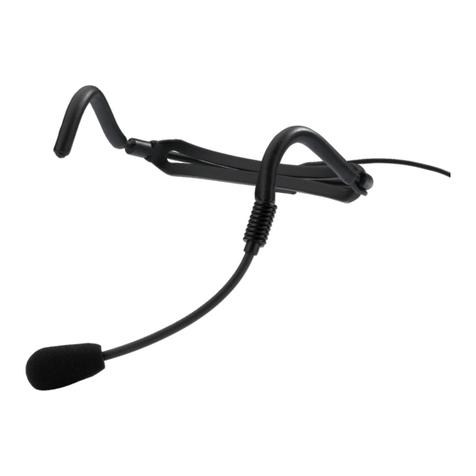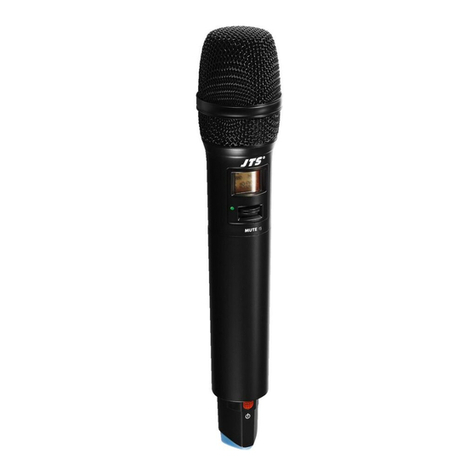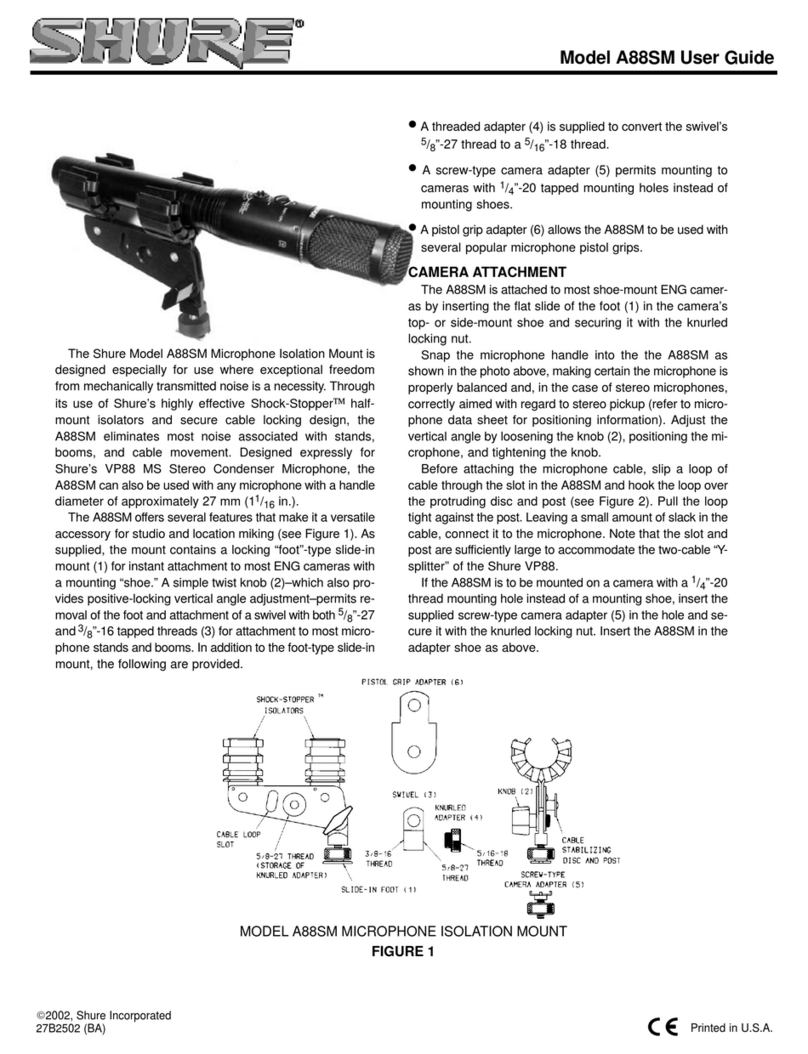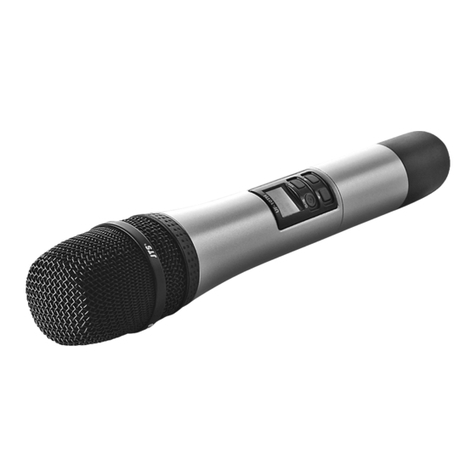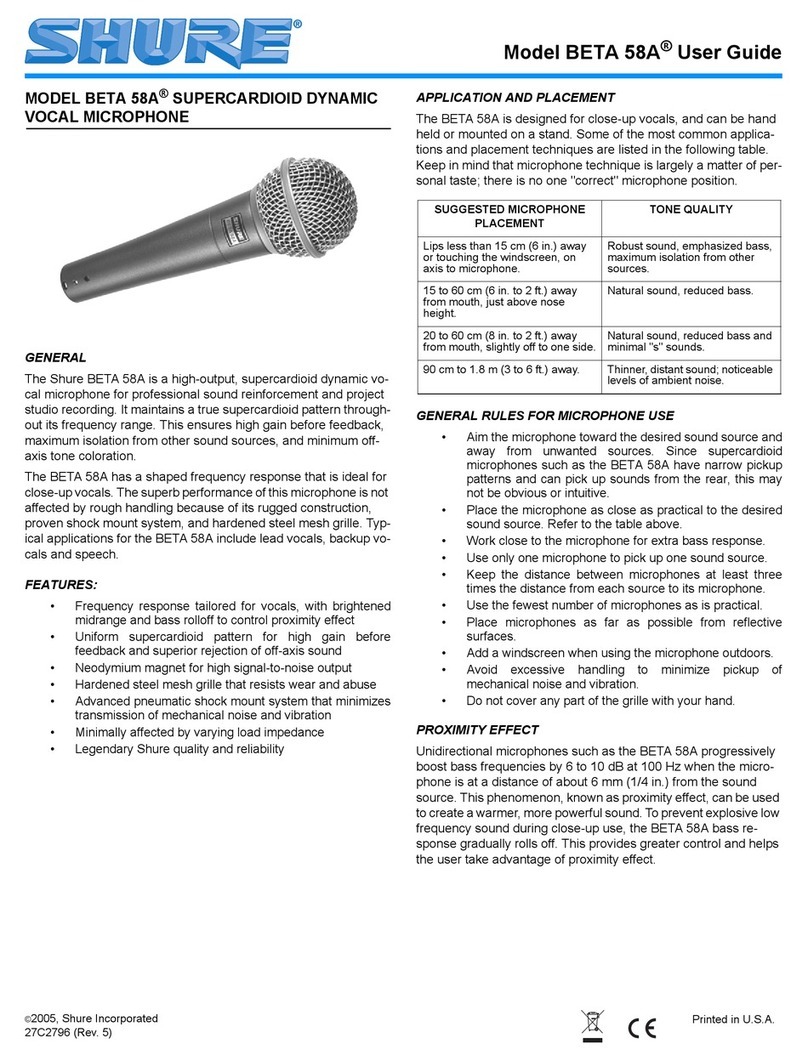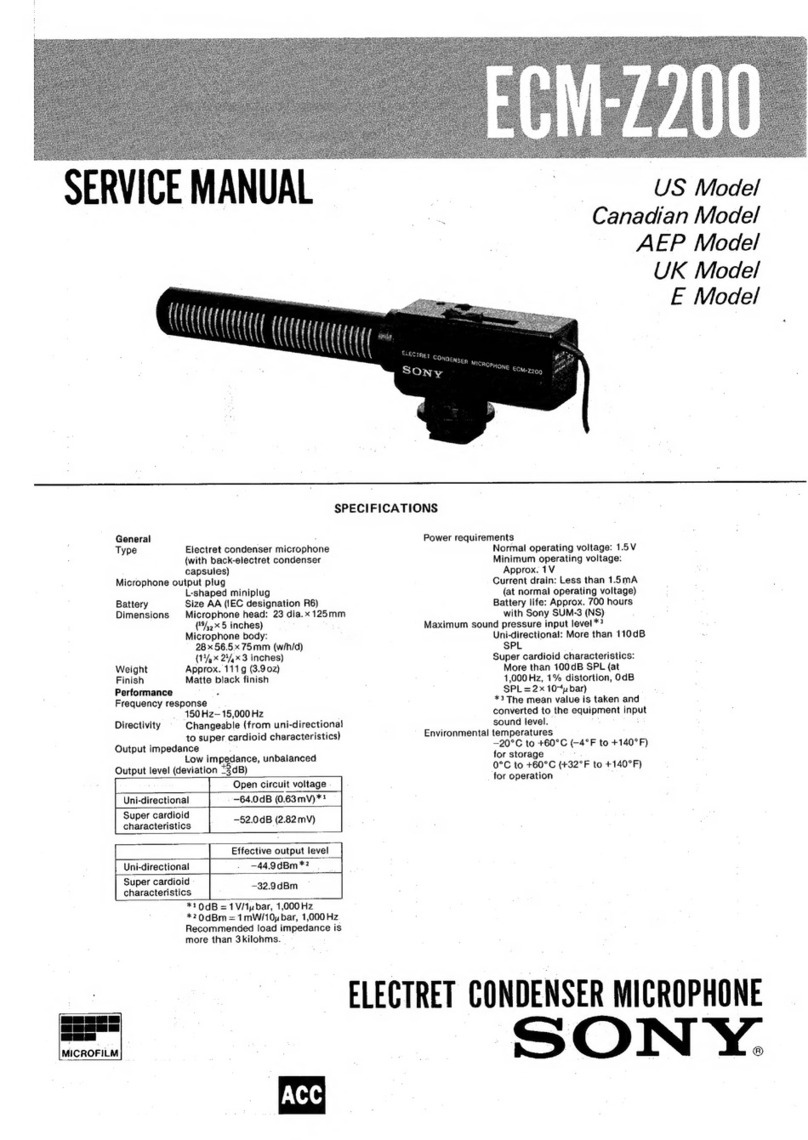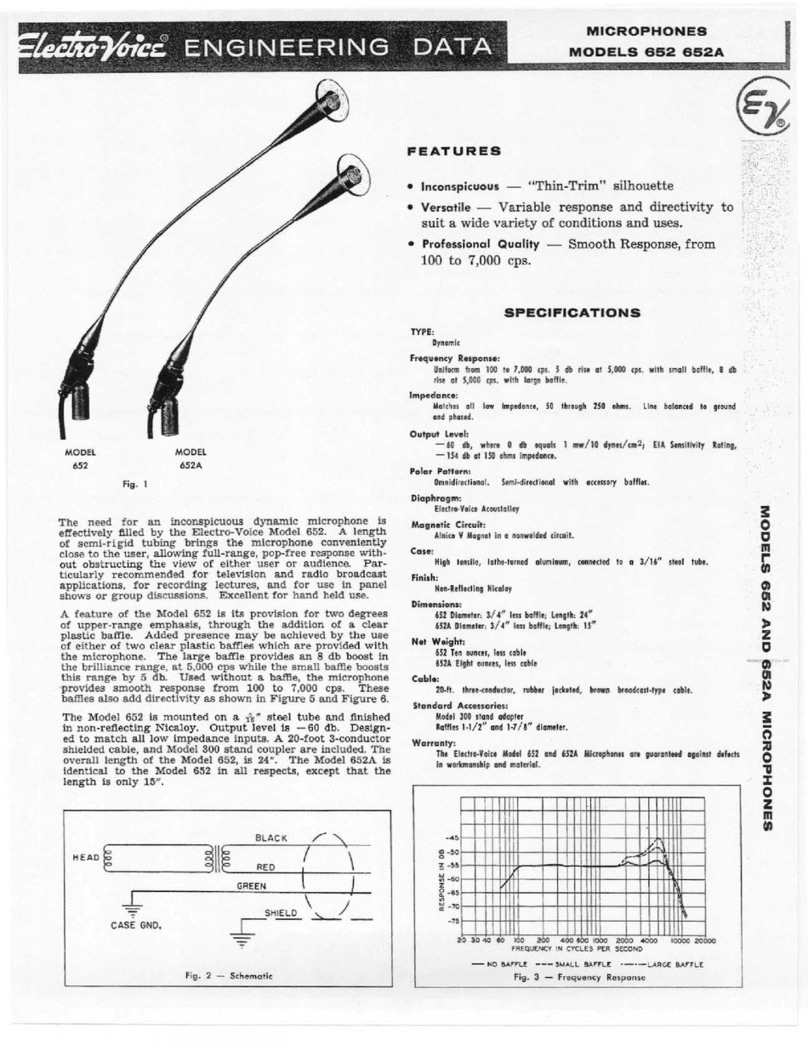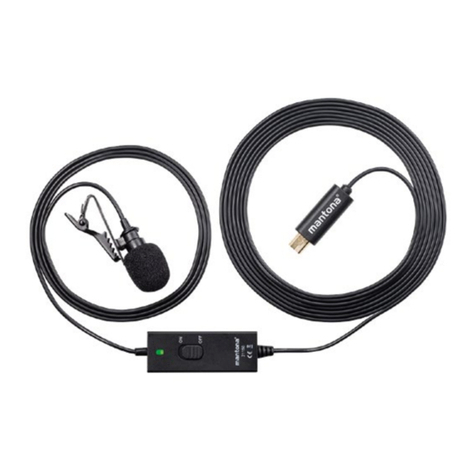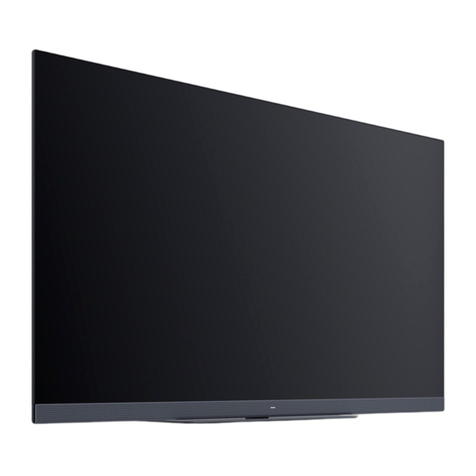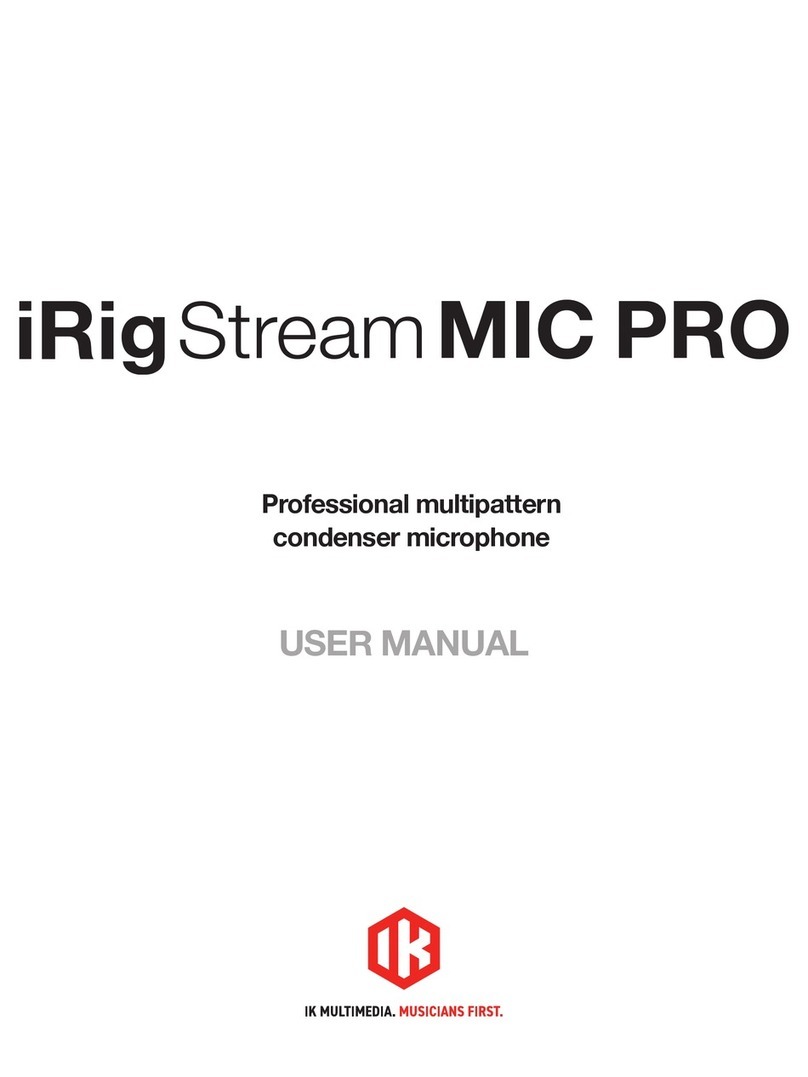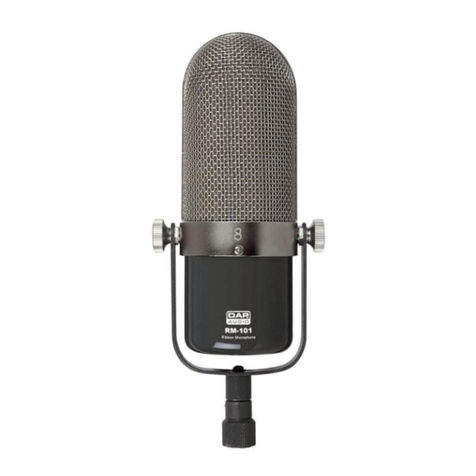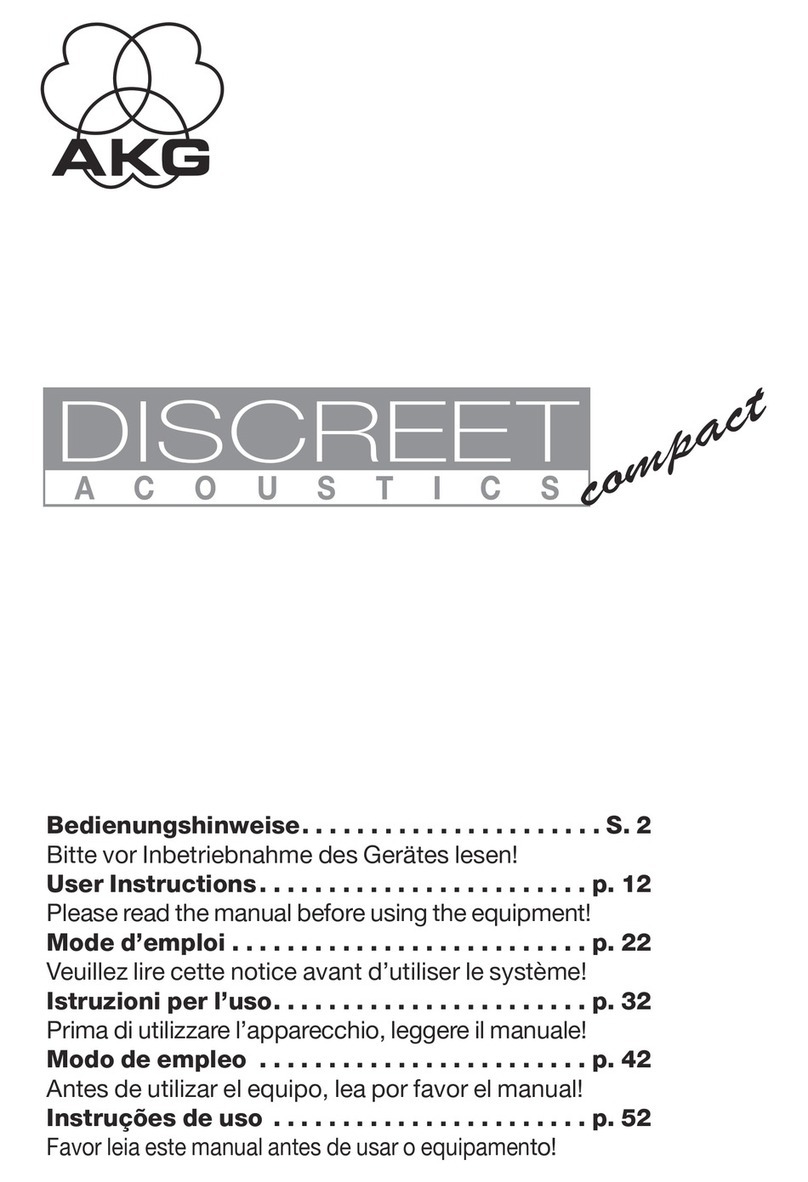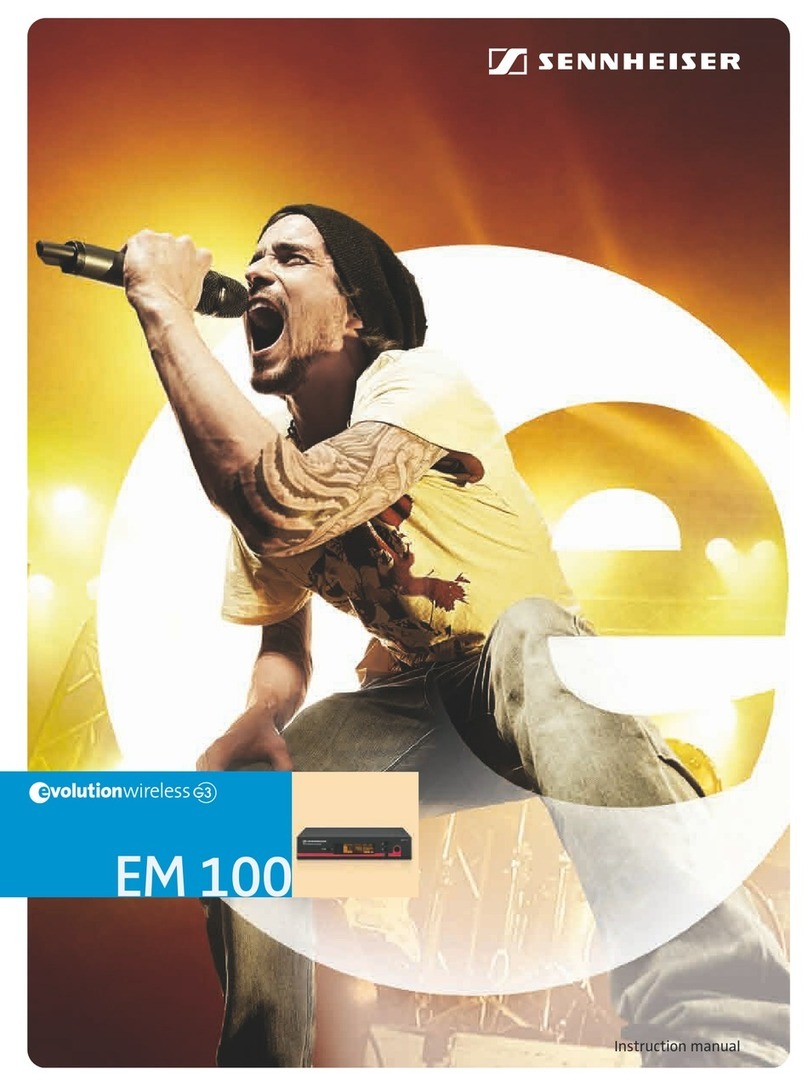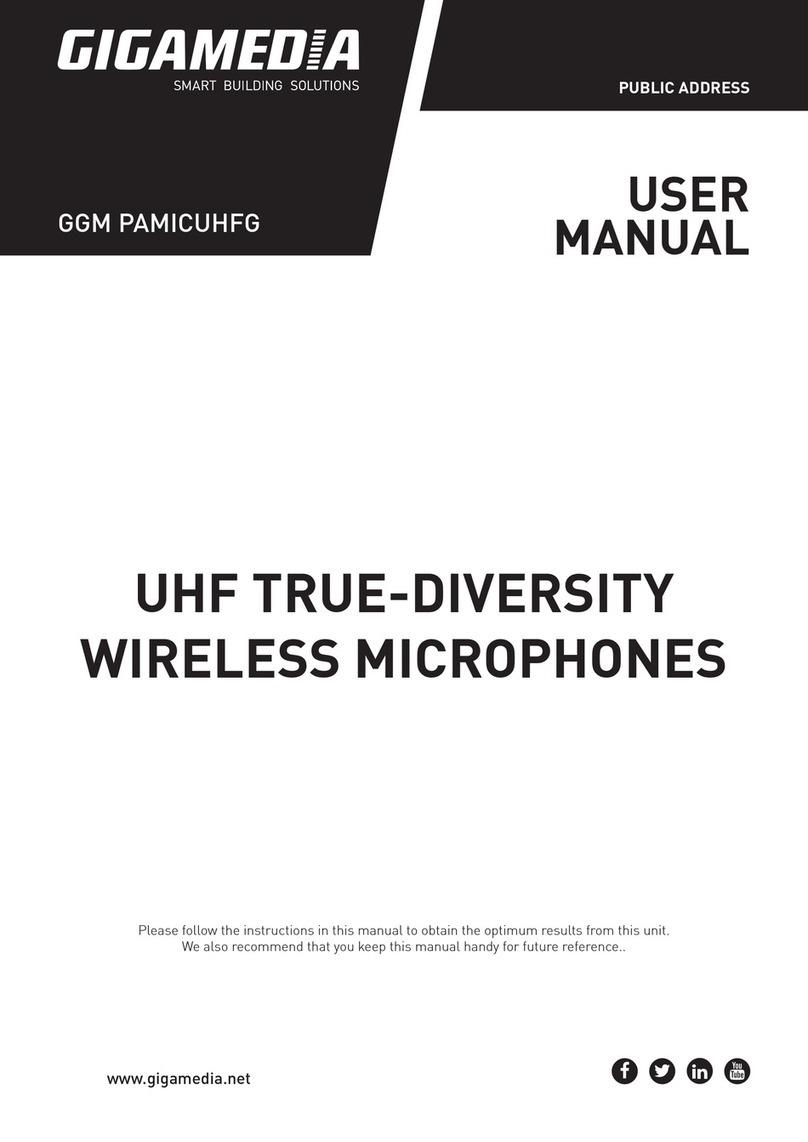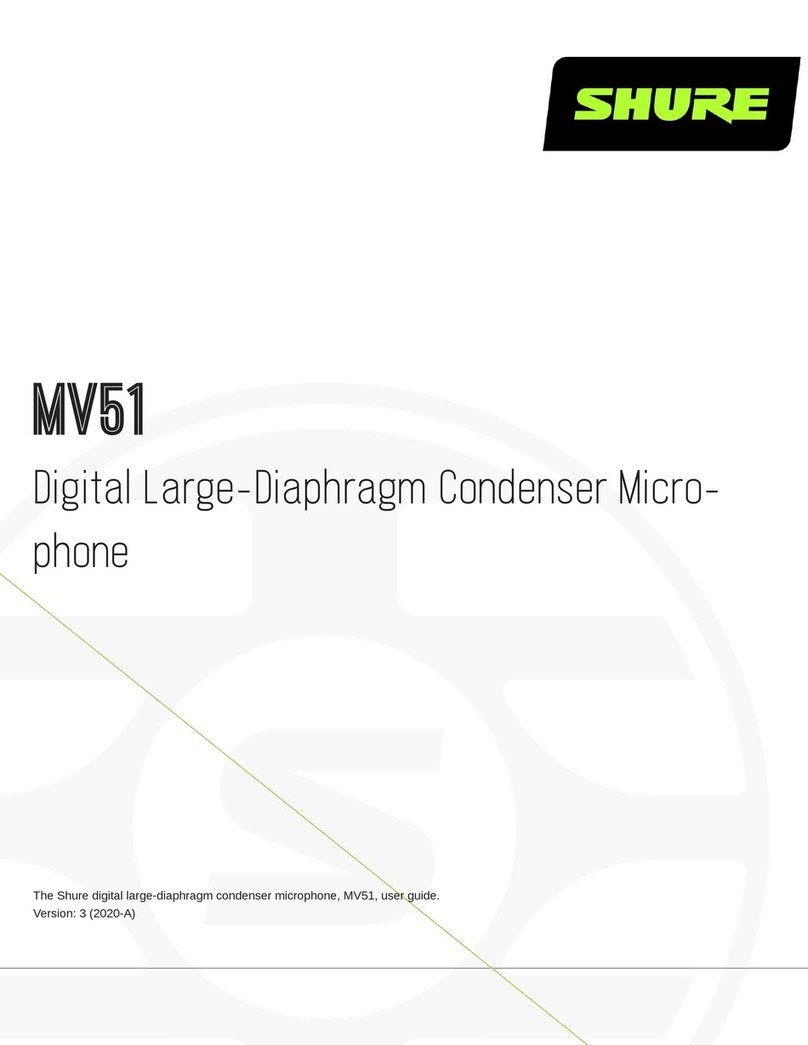
ELECTRONICS FOR SPECIALISTS ELECTRONICS FOR SPECIALISTS ELECTRONICS FOR SPECIALISTS ELECTRONICS FOR SPECIALISTS ELECTRONICS FOR SPECIALISTS ELECTRONICS
MONACOR INTERNATIONAL GmbH & Co. KG • Zum Falsch 36 • 28307 Bremen • Germany
Copyright©by MONACOR INTERNATIONAL. All rights reserved. A-1919.99.02.11.2018
Microfono a condensatore
Queste istruzioni sono rivolte all’utente senza
conoscenze tecniche specifiche. Vi preghiamo
di leggerle attentamente prima della messa in
funzione e di conservarle per un uso futuro.
1 Possibilità d’impiego
Questo microfono a condensatore a diaframma pic-
colo placcato oro da 17mm è adatto sia per le esi-
bizioni dal vivo che per le applicazioni in studio, ad
es. per ripresa vocale. Viene fornito con un supporto
con adattatore filettato e una borsa.
2 Avvertenze importanti
Il microfono è conforme a tutte le direttive rilevanti
dell’UE e pertanto porta la sigla .
•
Usare il microfono solo all’interno di locali e pro-
teggerlo dall’acqua gocciolante e dagli spruzzi
d’acqua, nonché da alta umidità dell’aria. La tem-
peratura d’esercizio ammessa è 0–40°C.
•
Per la pulizia usare solo un panno morbido,
asciutto; non impiegare in nessun caso acqua o
prodotti chimici.
•
Nel caso d’uso improprio, di collegamenti sbagliati
o di riparazione non a regola d’arte del microfono,
non si assume nessuna responsabilità per even-
tuali danni consequenziali a persone o a cose e
non si assume nessuna garanzia per il microfono.
Se si desidera eliminare il microfono de-
finitivamente, consegnarlo per lo smalti-
mento ad un’istituzione locale per il rici-
claggio.
3 Messa in funzione
1) Quando si utilizza un stand per microfono, av-
vitare il supporto sullo stand e posizionare poi
il microfono.
Se il stand è dotato di una filettatura da
9,5mm (3⁄8”), utilizzare l’adattatore per avvitare
il supporto. In caso di stand con filettatura da
15,9mm (5⁄8”), avvitare il supporto sullo stand
senza usare l’adattatore.
2) Utilizzare un cavo XLR (ad esempio de la
serie MEC) per collegare il microfono a un in-
gresso per microfono sull’apparecchio audio
(ad esempio mixer, registratore, amplificatore).
L’ingresso del microfono deve essere bilanciato
e deve fornire un’alimentazione phantom a 48V
(☞manuale dell’unità audio). Se l’ingresso mi-
crofono non fornisce alimentazione phantom
48V, collegare il microfono all’ingresso tramite
un’unità di alimentazione phantom (ad esempio
EMA-3).
4 Dati tecnici
Tipo:. . . . . . . . . . . . . . microfono a condensatore
Caratteristica
direzionale:. . . . . . . . . cardioide
Banda passante: . . . . . 50 –18 000 Hz
Pressione sonora max.: 137 dB
Sensibilità: . . . . . . . . . 14 mV/Pa con 1kHz
Impedenza:. . . . . . . . . 100 Ω
Corpo: . . . . . . . . . . . . metallo
Uscita: . . . . . . . . . . . . XLR, bilanciata
Alimentazione: . . . . . . alimentazione phantom
⎓
48 V
Dimensioni, peso: . . . . ⌀51 mm × 182 mm, 280g
Con riserva di modifiche tecniche.
CM-7
Référence num. • Codice 23.7200
Microphone à condensateur
Cette notice s’adresse aux utilisateurs sans
connaissances techniques particulières. Veuil-
lez lire la présente notice avec attention avant
le fonctionnement et conservez-la pour pou-
voir vous y reporter ultérieurement.
1 Possibilités d’utilisation
Ce microphone à condensateur avec petite
membrane 17mm recouverte d’or peut être utilisé
pour des prestations en live ou pour des applica-
tions en studio, par exemple comme microphone
de chant. Une pince micro avec adaptateur fileté et
une sacoche sont livrés.
2 Conseils importants
Le microphone répond à toutes les directives
nécessaires de l’Union européenne et porte donc
le symbole .
•
Le microphone n’est conçu que pour une utilisa-
tion en intérieur. Protégez-le des éclaboussures,
de tout type de projections d’eau et d’une hu-
midité d’air élevée. La plage de température am-
biante admissible est de 0– 40 °C.
•
Pour le nettoyage, utilisez un chiffon sec et doux,
en aucun cas de produits chimiques ou d’eau.
•
Nous déclinons toute responsabilité en cas de
dommages matériels ou corporels résultants si le
microphone est utilisé dans un but autre que celui
pour lequel il a été conçu, s’il n’est pas correc-
tement branché ou s’il n’est pas réparé par une
personne habilitée ; en outre, la garantie devien-
drait caduque.
Lorsque le microphone est définitivement
retiré du service, vous devez le déposer
dans une usine de recyclage adaptée pour
contribuer à son élimination non polluante.
CARTONS ET EMBALLAGE
PAPIER À TRIER
3 Utilisation
1) Si vous utilisez un pied de micro, vissez la pince
micro sur le pied et placez le micro dans la pince.
Si le pied possède un filetage 9,5mm (
3⁄8”),
vissez la pince avec l’adaptateur fileté sur le
pied ; pour un pied avec un filetage 15,9 mm
(5⁄8”), vissez la pince sur le pied sans l’adaptateur.
2) Reliez le microphone via un cordon XLR (par
exemple de la série MEC-…) à une entrée
micro sur l’appareil audio (par exemple table
de mixage, enregistreur, amplificateur). L’entrée
micro doit être symétrique et fournir une ali-
mentation fantôme 48V (☞notice de l’appareil
audio). Pour une entrée micro sans alimentation
fantôme 48V, il faut relier le micro à l’entrée via
une alimentation fantôme (par exemple EMA-3).
4 Caractéristiques techniques
Type : . . . . . . . . . . . . . microphone
à condensateur
Caractéristique : . . . . . cardioïde
Bande passante :. . . . . 50 –18 000 Hz
Pression sonore max. : 137dB
Sensibilité : . . . . . . . . . 14 mV/Pa à 1kHz
Impédance : . . . . . . . . 100 Ω
Corps : . . . . . . . . . . . . métallique
Sortie : . . . . . . . . . . . . XLR, symétrique
Alimentation :. . . . . . . alimentation fantôme
⎓
48 V
Dimensions :. . . . . . . . ⌀51 mm × 182mm
Poids :. . . . . . . . . . . . . 280 g
Tout droit de modification réservé.
FrançaisItaliano
➀
Diagramme polaire
Diagramma polare
0°
180°
270° 90°
30°
60°
120°
150°
330°
300°
240°
210°
➁
Réponse en fréquences
Risposta in frequenza
20 50 100 200 500 20k [Hz]1k 2k 5k 10k
−40
−30
−20
−10
0
10
20
30[dB]
180°
0°

